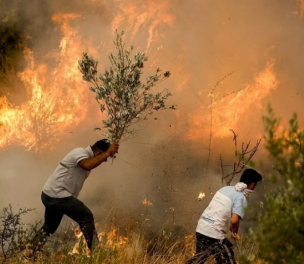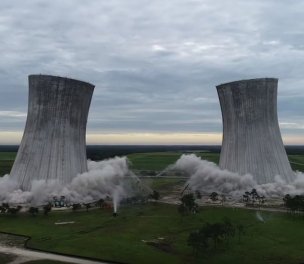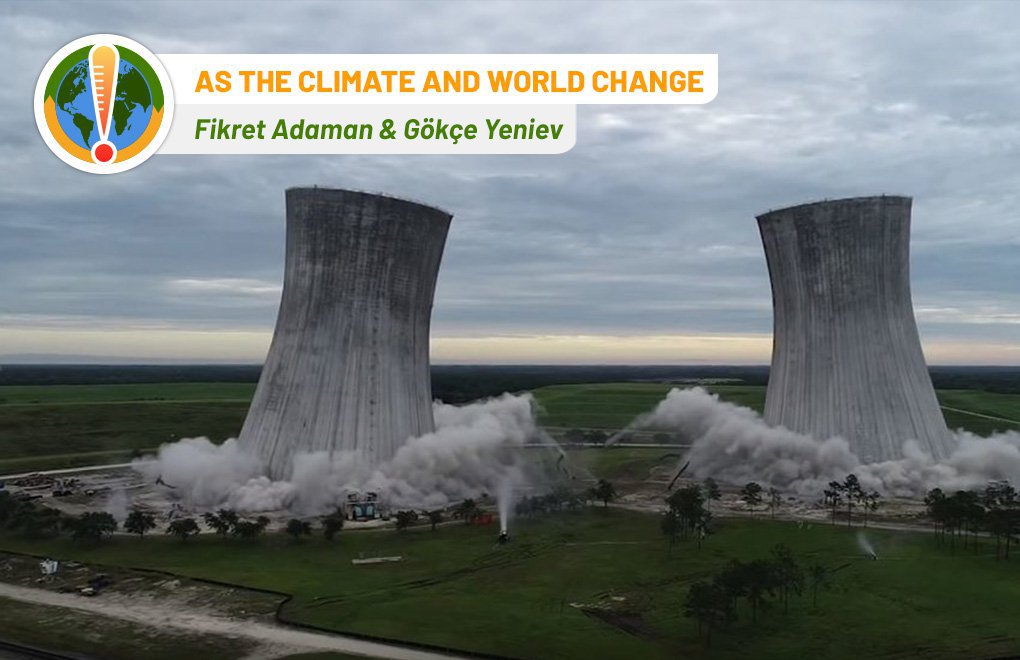Credit: AA/Archive
Click to read the article in Turkish / Kurdish
When we say food system, we are talking about a process that starts with agricultural inputs and continues with the production, cultivation, transportation, packaging, storage, consumption of food, and the losses and wastes that arise in this process.
As it is known, starting from the 1950s, a new approach dominated the food system with the green revolution. This approach has had many structural consequences on the production side: development of high-yielding cereal varieties, expansion of irrigation infrastructure, use of the latest technological and capital inputs, promotion of hybrid seeds, synthetic fertilizers and pesticides, and land consolidation.
Since then, the per capita food supply has increased by more than 30 percent. Nitrogen fertilizer use has increased eightfold, and irrigated areas doubled. Along with this, and in parallel with it, the corporate food regime has completed its evolution and dominated the agri-food system through the liberalization of international trade, vertical integration of food production and supply chains, innovations in technology and food processing, and changes in consumer demand due to marketing. This food regime has reshaped the agri-food system on different temporal and spatial planes.
Contradictions of the food regime
Although the current food regime presents itself as a promise of global development and hunger relief, it contains social and ecological contradictions.
The transformation of production, distribution, and consumption relations around food, along with increasing income and wealth inequality, presents various constraints on access to food, especially for the poorest segments of societies.
The corporate food regime causes the deepening of ecological destruction and the climate crisis. On the other hand, it makes the poor vulnerable in the face of environmental problems.
Worldwide, more food is produced than is needed to feed the entire population. However, around 819 million people are hungry, 821 million people are malnourished, 154 million children under the age of five are stunted, and 613 million women and girls aged 15 to 49 suffer from iron deficiency, 2 billion adults are overweight or obese. Although there was not an enormous decrease in production, the number of undernourished people increased by 161 million from 2019 to 2021.
This nutritional crisis occurs because of the combination of factors related to climate change such as conflict and civil war, unpredictable weather conditions, disruption of long/globalized supply chains due to the Covid-19 pandemic.
In this process, increasing food prices, coupled with declining incomes and expanding income inequality, are causing more and more households to experience food insecurity.
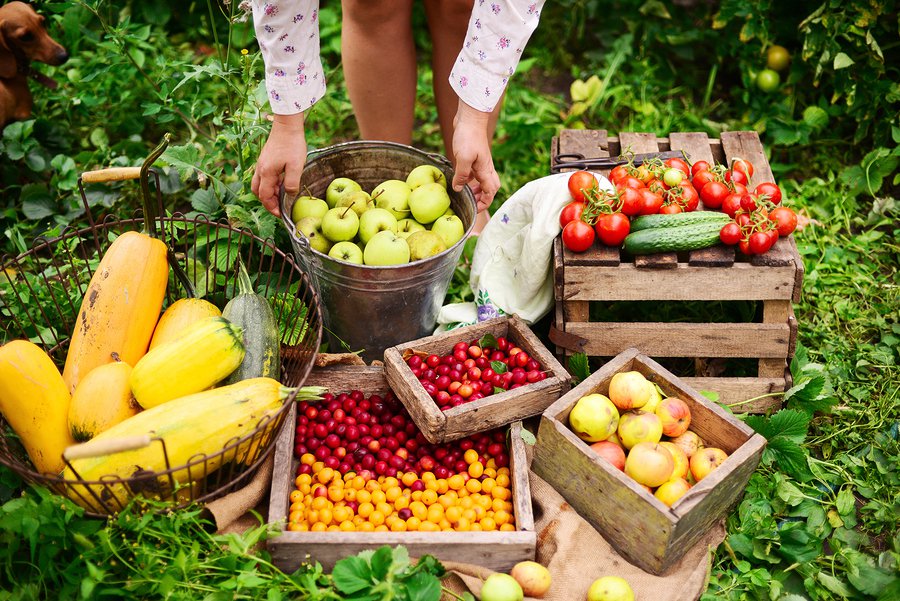
Responsible for one-third of emissions
On the other hand, a new study published in Nature Food says the food system is responsible for a third (34 percent) of global emissions.
According to the IPCC report, the emission rates for each step in the food system are the following: 10-12 percent from crop and livestock activities; 8-10 percent from land use and land-use change, including deforestation and peatland degradation; 5-10 percent from supply chain activities.
This estimate includes greenhouse gas emissions from food loss and waste. Each year, one-third of the food produced worldwide is wasted at some stage from production to consumption.
Manufacturers are getting fragile
While the agri-food system changes the climate, the increase in temperature, shifts in the seasons, increasing water shortage, more frequent extreme weather events, pests, and fires due to climate change have started to affect the agri-food system negatively.
Weather events such as floods, storms, and extreme heat damage animals and crops, making producers more vulnerable economically and socially. In addition, seasonal shifts have the potential to increase pest populations and lead to more pesticide use.
The early onset of spring causes crops to grow before reaching adequate water and available nutrients. Or it can result in frosts.
Warmer winters and too hot summers increase the costs of storing food. It can lead to food wastage due to a lack of refrigeration or more carbon emissions because more energy is needed.
The prolongation of the fire seasons poses an enormous threat to the health of the producers, their habitats, and their production, which is their main livelihood. All this creates price fluctuations, deepening food insecurity. Rising temperatures and CO2 levels in the atmosphere do not only affect food supply and security but also reduce the quality of the food.
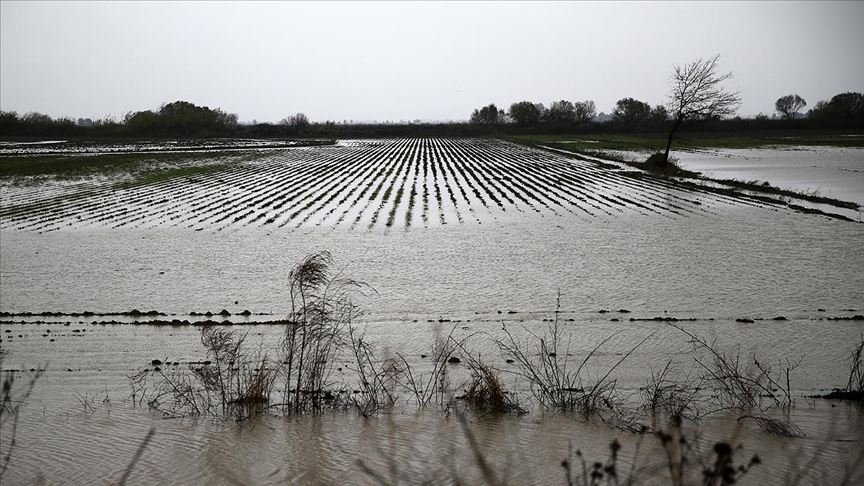 Credit: AA/Archive
Credit: AA/Archive
From climate injustice to food injustice
In short, the agri-food system interacts with climate change in a vicious circle. It is among the main contributors to climate change and is heavily affected by climate change.
The dominant food regime is not a solution to hunger or malnutrition, nor is it resistant to economic, social, political, and ecological crises. For this reason, crisis periods deepen the structural problems by being articulated with the already existing problems inherent in this regime.
We can say that all these effects make the weak links of the chain that does not cause climate change, such as small producers and poor consumers, more fragile, and in this sense, they create both food injustice and climate injustice.
Many political and academic actors are aware of this relationship between the agri-food system and climate change. However, some believe that this issue can be resolved with the basic premise of the green revolution that we have just mentioned.
This perspective places the same rhetoric in the headlines of the news, reports, and academic articles: Production needs to increase by 60 percent to meet food demand by 2050 due to population growth and changes in dietary habits. However, in the absence of effective adaptation, worldwide yields are expected to drop by 30 percent.
Technical interventions are not adequate
This discourse opens the door to an apolitical (and highly technical) solution. The way to deal with climate change and its risks is usually seen in increasing production and yield in the narrow sense through technical solutions such as drought-resistant seeds, climate-smart agriculture technologies, agricultural insurance schemes, or early warning systems.
However, an approach that aims to break the vicious circle between climate change and the agri-food system cannot be compressed into technical interventions. It is necessary to deal with the economic, social, and political dynamics that trigger global warming and cause this vicious circle.
The transformations at these points should be designed to destroy the dominant corporate food regime and construct a new one.
Establishing a new food regime
People must have regular access to healthy and nutritious food to live a healthy life independent of their income. To tackle hunger and malnutrition, governments need to go beyond maintaining food production and recognize and actively support policies that guarantee the right to food.
It means the transition from a market-based agri-food system to a rights-based agri-food system. For many communities, especially in countries where agriculture is their main livelihood, this means supporting the community's capacity, opportunities, and abilities to produce its food.
In this context, as expressed in the People's Food Policy written by the food movement actors in England, the way to create a food policy that prioritizes social and environmental needs and values and guarantees the right to food is to realize food sovereignty.
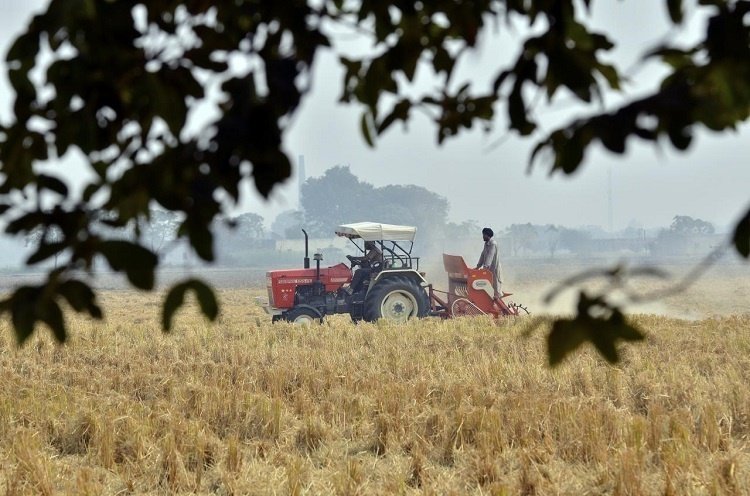
Access to food as a right
Access to food should be recognized as a right. However, how food is accessed is an important issue, too. Participation of every actor in the food system in decision-making should be ensured on how to access food.
For example, let's consider the aid for the food needs of a poor household. How close can a shopping card to the supermarket come to the definition of food sovereignty: "people's right to access healthy and culturally appropriate food produced in ecologically healthy and sustainable ways, and the right of people to determine their food and agricultural systems"?
Food sovereignty
As can be understood from its definition, the principles and basic principles of food sovereignty offer us an opening at this point. These principles give the control of the food system to the producers and consumers for democratic management.
According to these principles, food is produced for feeding people, not for profit-driven markets open to financial speculation. It accepts that those who produce food are also those who have knowledge. It argues that to lead a life worthy of human dignity, they must reach fair wages and participation in decision-making mechanisms.
In addition, food sovereignty underlines the need to decentralize food systems. Since short food supply chains and local food networks ideally mean a reduction in the number of direct contacts and/or intermediaries between the producer and the consumer, it facilitates the reduction of global capital markets' interference in the production, thus maintaining economic control locally. The food system is often considered in conjunction with producer-protective principles such as fair wages for small-scale producers, preservation of local identities, culture, and information resources.
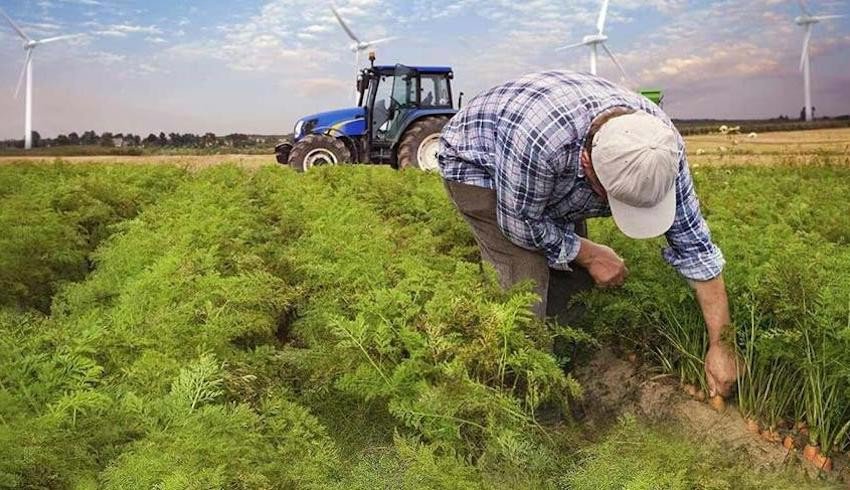
Making each step ecological
In direct relation with the climate change, it is a priority for each step to be ecological. The agri-food system should be restructured in a way that ecological production, distribution, and consumption contribute to the mitigation of climate change. It should also ensure the resilience and adaptation of production and supply chains to the effects of climate change.
Conservation of diversity with agroecological methods plays a key role here. The diversity of animals, plants, fungi, and bacteria; diversity in land use, farming practices, and economy come to the fore as protective factors to minimize climatic shocks.
At the same time, the application of soil conservation methods, eliminating the input of synthetic fertilizers and pesticides, provides an exit from carbon-intensive production. With short supply chains, agroecological practices support people's access to food by protecting the environment, unlike the prevailing agri-food system responsible for almost 30-35% of emissions.
The first goal is to correct injustices.
In summary, without correcting the economic and social injustices embedded in the dominant corporate food regime, it is not possible to reduce the effects of the agri-food system on the climate or to prevent climate change from disrupting this system.
Considering the many social and political incentives for stumbling, the inadequacy of the steps taken within this paradigm and the fact that it produces new injustices can be considered as proof of this impossibility.
The transition to a sustainable and resilient food system in response to the climate crisis can happen by recognizing food as a right and embracing the principles of food sovereignty. Such a transition is possible with the support of farmers and agricultural workers in rural areas and those who consume, distribute, and process food in urban areas. In short, all users.
To create this support, it is necessary to see the inequalities and injustices inherent in the corporate agri-food system and make the solutions and common interests visible to popularize the policies. Climate justice and food justice will come together!
(MMG/SO/EÜ/SD)
"As The Climate and World Change" article series*
Our life becomes history while we live! - Ömer Madra
1 / A country outside of the global climate policy: Turkey - Ebru Voyvoda
2 / Climate change, securitarian policies and ghosts - Özdeş Özbay
3 / Turkey's energy policy: Indigenous at home, Blue Homeland in the world - Emre İşeri
4 / The impact of climate crisis and fossil fuels on child health - Çiğdem Çağlayan & Funda Gacal
5 / We will see beautiful days, coal-free and sunny days - Elif Ünal
6 / Either capitalism or the future - Tuna Emren
7 / The three pillars of climate journalism: Science, politics, and social justice - Ece Baykal Fide
8 / Bringing science, struggle, and art together - Yasemin Ülgen
9 / Clean energy or betrayal? - Serkan Ocak
10 / It is time to say stop economic growth - Fikret Adaman & Gökçe Yeniev
11 / When climate refugees knock on our door - Mehmet Mücteba Göktaş
13 / Climate crisis affects women, women affect climate struggle - Merve Özçelik
14 / Climate fiction in literature- Buket Uzuner
15/ Dr. Faustus and children in the age of fire- Ömer Madra
* This series of articles is published with the financial support of Oslo Metropolitan University (OsloMet) Journalism & Media International Center.








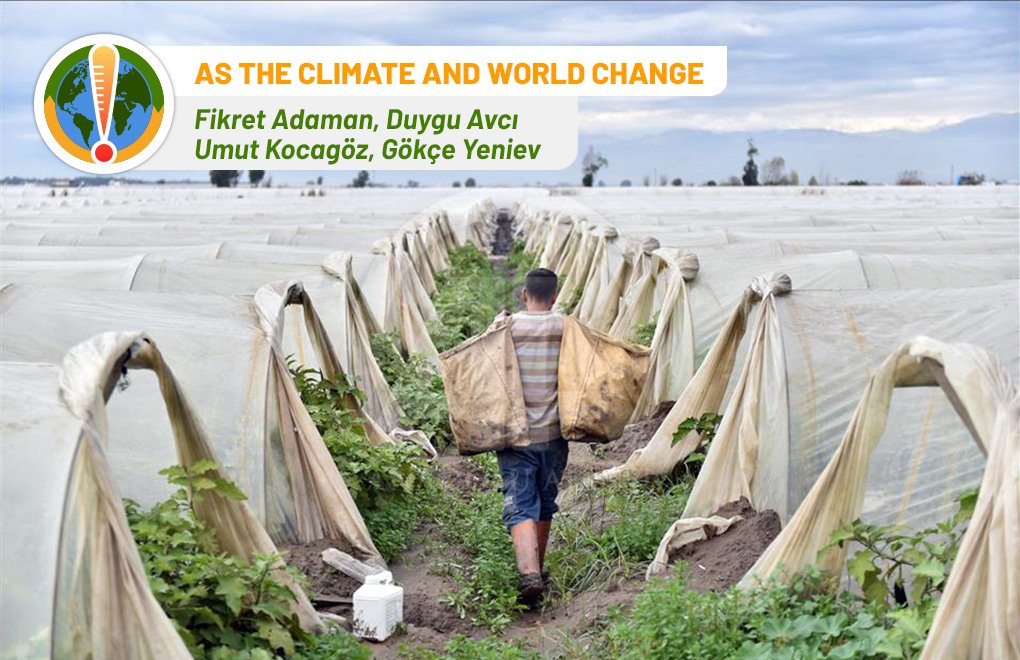
as.jpg)

